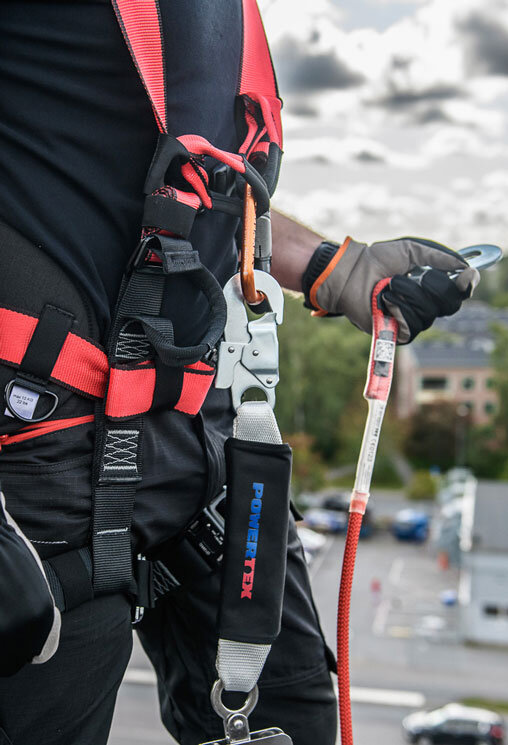Considerations for working with Fall Protection Equipment

When engaged in work at heights, it is crucial to adhere to regulations specifying that individuals performing tasks where there is a risk of falling from two meters or more must implement protective measures to mitigate such risks. These measures can involve collective protection, such as work platforms or scaffolding, or the use of personal fall protection equipment.
To establish a secure working environment at elevated levels, a thorough assessment of the situation must precede the commencement of work. This assessment encompasses a comprehensive risk analysis and a well-documented rescue plan, both of which should be maintained by the individuals involved. It is essential to underscore that the use of personal fall protection equipment should never be undertaken in isolation to minimize risks effectively.
Risk Analysis
A meticulous risk analysis evaluates all potential risks associated with the task at hand. Identified risks should be accompanied by measures aimed at eliminating or minimizing them. The risk analysis should also encompass considerations such as the workplace's layout, the location and strength of the anchorage point, the appropriateness of chosen equipment based on user competence and experience, and the provision of ergonomic conditions to reduce discomfort and strain on the user.
Rescue Plan
In the event of an accident, swift rescue operations are paramount. A user caught in a fall arrest harness faces the risk of experiencing hanging trauma, which can result in severe injuries and, in extreme cases, a fatal outcome. Consequently, a well-defined rescue plan with clear procedures for a quick and safe rescue is indispensable. Before initiating work at height, potential measures that facilitate a safe and efficient rescue, preventing hanging trauma, must be carefully considered.
Inspection
Prior to each use, the fall arrest equipment must undergo a thorough check for visible damage or broken seams. An annual inspection by a competent person is imperative, especially when the equipment has been exposed to abnormal loads. Damaged equipment should never be utilized and should be either discarded or returned for repair following the manufacturer's instructions.

Do you wish to know more about fall arrest equipment? Reach out to our expert today!
For faster response, call us directly at +47 468 46 232
ConsiderationsIt is crucial to adhere to regulations specifying that individuals performing tasks where there is a risk of falling from two meters or more must implement protective measures to mitigate such risks. |
Learn more |
Fundamental UnderstandingBreaking down the essential components into items forms a holistic personal fall protection system. |
Learn more |
Height Work RisksTo ensure the efficacy of fall protection in the event of a descent, three critical factors demand consideration. |
Learn more |
Preparation GuidelinesEmbarking on work at significant heights demands not only the correct equipment but also adept handling from you as a user. |
Learn more |


